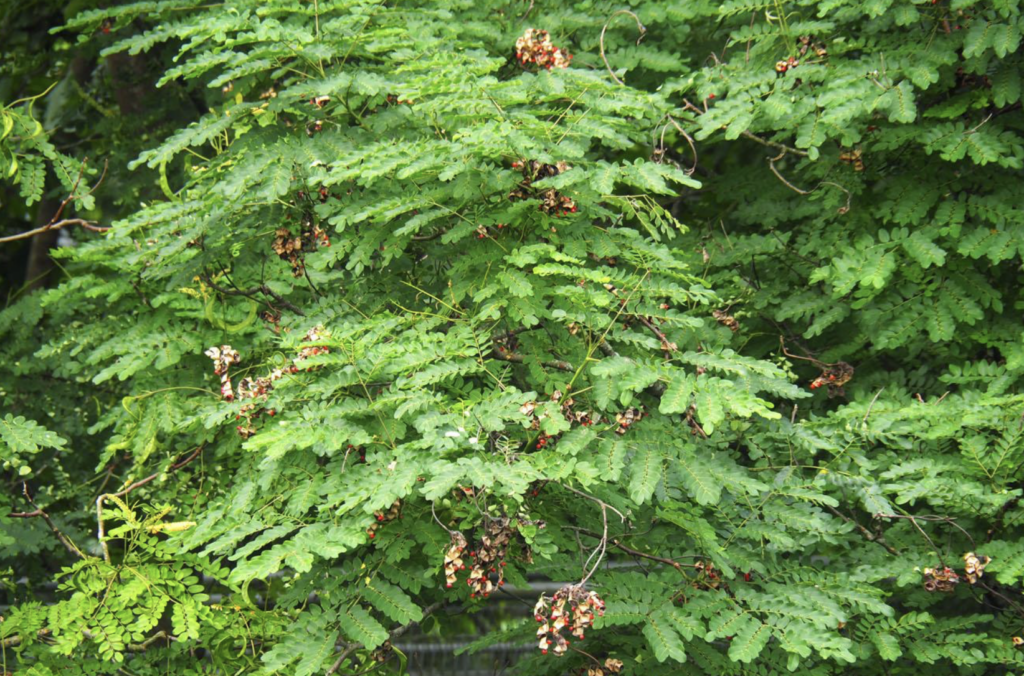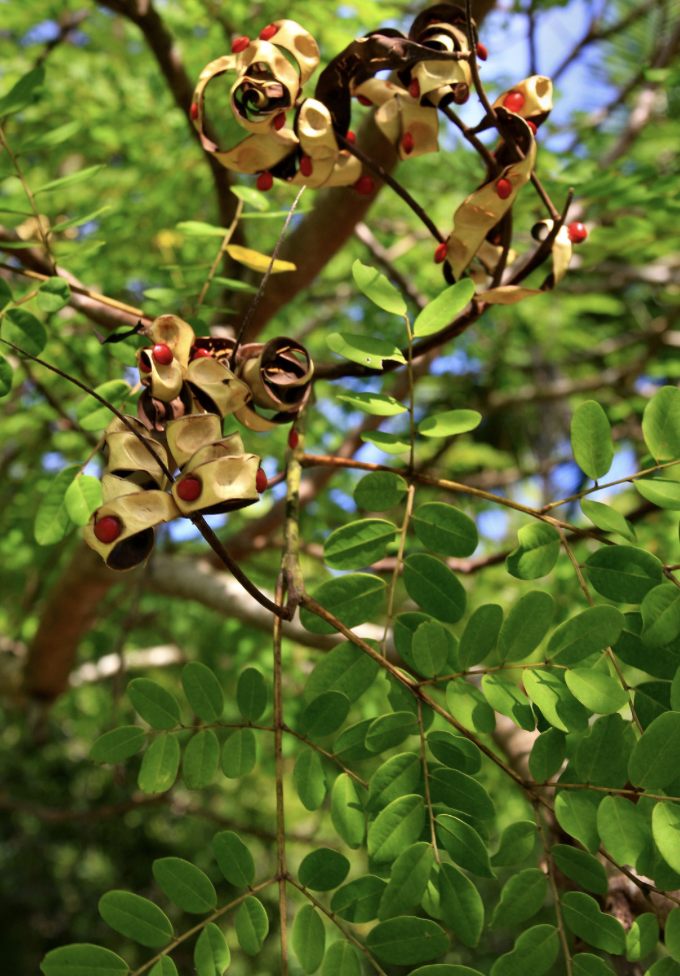Red-bead tree (Saga)
Adenanthera pavonine
Description
Adenanthera pavonine is a fast-growing tree reaching up to 40 m with a spreading crown and white-yellow fragrant flowers when in bloom. It has small compound leaves and produces clusters of small yellow flowers forming long inflorescences growing up to 30 cm. Fruit are pods containing many red seeds looking like beads attractive to birds who eat and disperse them.
Place of origin
South East Asia
Ethnobotanical uses
The hard red wood called sandalwood is used to build cabinets, furniture, wood ornaments and houses. Powdered wood provides a source of red dye, used by Brahmins in India to mark the forehead. In traditional medicine, the decoction of the young leaves and bark is used to treat diarrhea. Boiled ground up seeds are used to relieve headaches, inflammation and rheumatism. Uncooked seeds (though toxic) have been used as intoxicant. The seeds are also ornamental and used to make necklaces. Due to relatively uniform weight (4 seeds weigh about 1 g), seeds are also used in India and Sri Lanka for centuries to weigh gold and silver where every seed is said to weigh exactly the same, although this is not true. In Singapore, the seeds are locally used as fill for tetrahedral bags used in children’s game of ‘five-stones. Seeds are frequently collected in bottles and are referred as “love beans” in China.
Fun fact: Malaysia’s first national car Proton Saga is named after this plant.
IUCN conservation status
Least Concern (LC)



